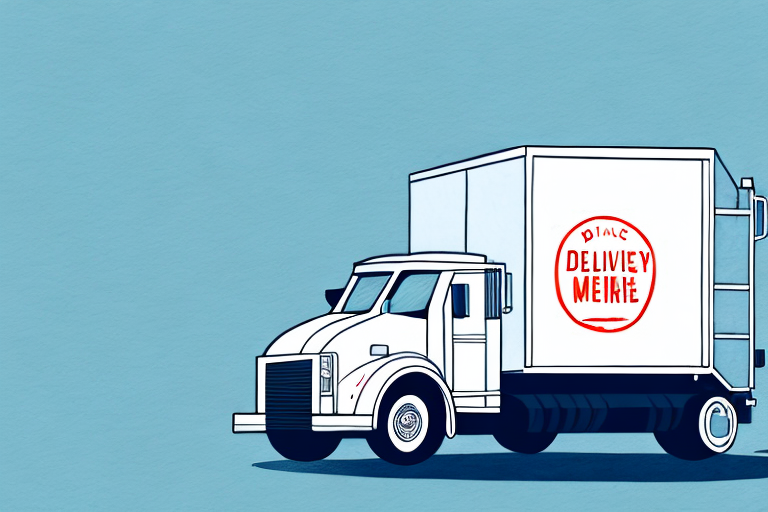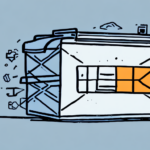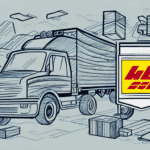What Is a Courier Facility?
A courier facility is a specialized entity focused on the efficient delivery of packages and parcels. These facilities are essential for businesses and individuals who require swift and dependable delivery services or have specific shipping needs. Services offered by courier facilities include same-day delivery, express courier services, and international shipping. In this article, we will delve into the significance of courier facilities, their historical evolution, operational processes, the impact of technology, and the challenges they face in today’s dynamic market.
The Importance of Courier Facilities for E-commerce
Courier facilities are pivotal to the global e-commerce industry. With the e-commerce market projected to reach $6.4 trillion by 2024[1], online retailers depend on these facilities to deliver products to customers swiftly and reliably. The ability to meet delivery expectations is crucial for customer satisfaction and retention, directly impacting a business's bottom line.
Additionally, courier facilities offer value-added services such as real-time shipment tracking, delivery notifications, and flexible delivery options. These features enhance the customer experience by providing transparency and convenience, allowing customers to monitor their packages from dispatch to doorstep and choose delivery times that suit their schedules.
Furthermore, courier facilities enable e-commerce businesses to expand their reach globally. By facilitating international shipping, these facilities allow online retailers to tap into new markets and cater to a broader customer base, thereby increasing revenue potential.
Courier Facilities vs. Post Offices: Key Differences
While both courier facilities and post offices provide package delivery services, they cater to different needs and offer distinct advantages. Courier facilities typically offer faster and more flexible delivery options, making them ideal for businesses and individuals requiring urgent shipments. They also provide advanced tracking and insurance options, ensuring added security and peace of mind.
In contrast, post offices are government-run entities that offer standard mail services, which are more suitable for non-urgent deliveries. The customer service at courier facilities is often more personalized, with dedicated representatives available to address any delivery concerns, whereas post offices may experience longer wait times and limited customer support.
Moreover, courier facilities can offer specialized services such as same-day delivery, international shipping, and temperature-controlled transportation for sensitive items like medical supplies or perishables. Post offices, on the other hand, have restrictions on shipping certain items, including hazardous materials and firearms.
The History and Evolution of Courier Facilities
The concept of courier services dates back to ancient civilizations, where couriers were employed to deliver messages and goods between kingdoms. In the United States, the Pony Express, established in 1860, is a notable example, utilizing a relay system of horseback riders to facilitate mail delivery across vast distances. This system significantly reduced delivery times compared to previous methods.
With technological advancements, courier facilities have continuously evolved to meet market demands. The introduction of air transportation in the early 20th century revolutionized the industry, enabling faster and long-distance deliveries. Today, courier services leverage a combination of air, ground, and sea transportation to ensure efficient global delivery networks.
The digital age has further transformed courier facilities, integrating advanced technologies to enhance operational efficiency and customer experience. Automation, real-time tracking, and sophisticated logistics management systems are now integral components of modern courier services.
Operational Processes in Courier Facilities
Package Handling and Sorting
Upon receipt, packages are meticulously sorted based on their destinations using automated sorting systems. This ensures that each package is directed to the appropriate distribution center for timely delivery.
Transportation and Delivery
Courier facilities utilize a variety of transportation methods, including trucks, vans, bicycles, and drones, to facilitate the movement of packages. Special equipment and vehicles are employed to handle specific types of shipments, such as refrigerated trucks for perishable goods.
Tracking and Monitoring
Advanced barcode scanning and GPS tracking technologies enable real-time monitoring of packages throughout the delivery process. Customers can access detailed tracking information, enhancing transparency and reliability.
The Role of Technology in Modern Courier Facilities
Technology is a cornerstone of modern courier facilities, driving efficiency and improving service quality. Smart devices like smartphones and tablets are used for package tracking and customer communication, while advanced routing and dispatch software optimize delivery routes to minimize transit times.
Automated sorting systems handle high volumes of packages with precision, reducing the likelihood of errors and delays. Additionally, innovations such as drone delivery and electric vehicles are being explored to address last-mile delivery challenges and enhance sustainability.
Personalization is another significant benefit of technological integration. Customers can customize delivery preferences, receive real-time updates, and enjoy more tailored service experiences, boosting overall satisfaction and loyalty.
Choosing the Right Courier Facility for Your Business
Selecting an appropriate courier facility is crucial for businesses to ensure seamless operations and customer satisfaction. Key factors to consider include:
- Delivery Speed: Options such as same-day or next-day delivery can significantly impact customer satisfaction.
- Delivery Coverage: Ensure the courier can service all target markets, including international destinations.
- Tracking Capabilities: Real-time tracking enhances transparency and reliability.
- Insurance Options: Protection against loss or damage is essential for valuable shipments.
- Cost: Competitive pricing without compromising on service quality is important for budget management.
- Customer Service: Responsive and dedicated support can resolve issues promptly and efficiently.
It's also beneficial to choose a courier facility with experience in your specific industry, as they are likely to understand unique delivery requirements and challenges.
Sustainability and Ethical Practices in Courier Facilities
As environmental concerns grow, courier facilities are adopting sustainable practices to minimize their ecological footprint. This includes using eco-friendly vehicles such as electric or hybrid trucks, optimizing delivery routes to reduce fuel consumption, and implementing recyclable packaging materials.
Ethical practices are equally important, ensuring fair treatment of workers through fair wages, safe working conditions, and opportunities for professional development. Collaborations with labor unions and adherence to labor laws are essential for maintaining a responsible and ethical workforce.
By prioritizing sustainability and ethics, courier facilities not only contribute to environmental conservation but also enhance their reputation and appeal to socially conscious consumers.
Common Challenges Faced by Courier Facilities and Solutions
Courier facilities encounter various challenges in providing efficient and reliable services. Some of the primary challenges include:
- Last-Mile Delivery: The final leg of delivery can be complex, especially in urban areas with traffic congestion and limited parking.
- Rising Competition: The increasing number of courier companies intensifies competition, necessitating continuous improvement and innovation.
- Regulatory Compliance: Navigating international shipping regulations and customs requirements can be cumbersome.
- Technological Integration: Keeping up with rapid technological advancements requires substantial investment and expertise.
To address these challenges, courier facilities are investing in innovative delivery solutions such as drone deliveries and electric vehicles, partnering with local businesses for pickup and drop-off points, and leveraging advanced technologies for better operational efficiency. Additionally, maintaining agility and flexibility allows courier facilities to adapt to changing market conditions and customer expectations effectively.
Conclusion
Courier facilities are integral to the functioning of the global economy, providing essential delivery services that support both businesses and consumers. Their evolution from historical courier systems to modern, technology-driven operations highlights their adaptability and critical role in today’s fast-paced market. By embracing advanced technologies, prioritizing sustainability and ethical practices, and overcoming operational challenges, courier facilities continue to enhance their service offerings and meet the dynamic needs of the modern world.
[1] Source: Statista - E-commerce Sales Worldwide




















